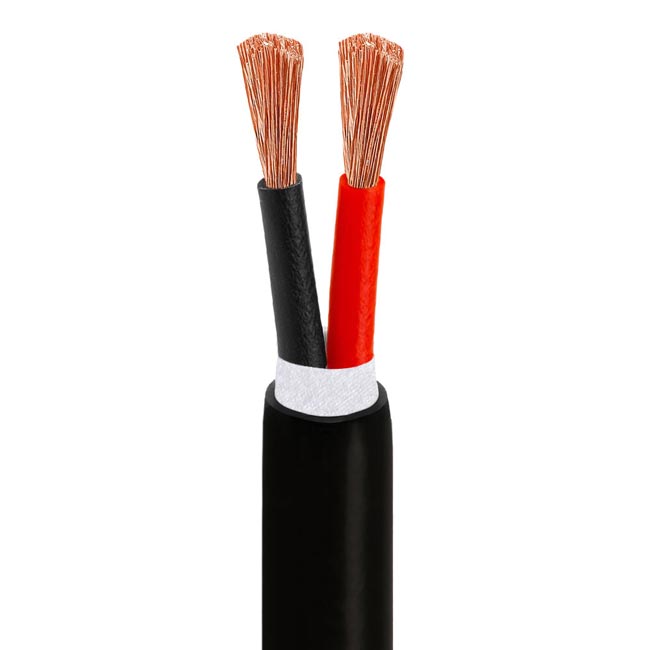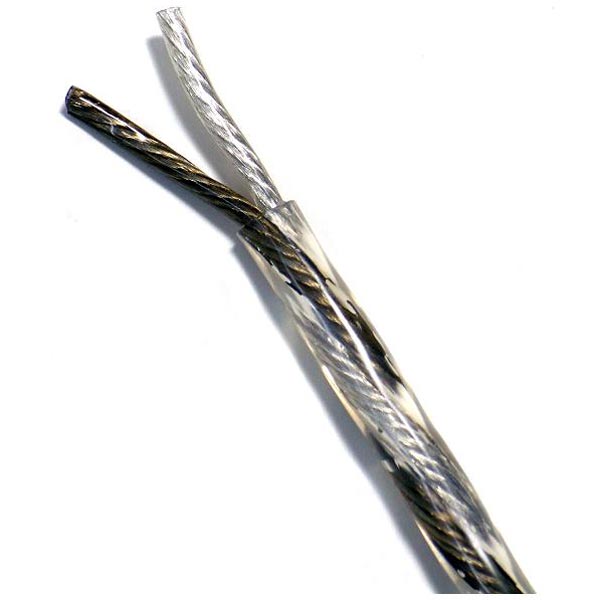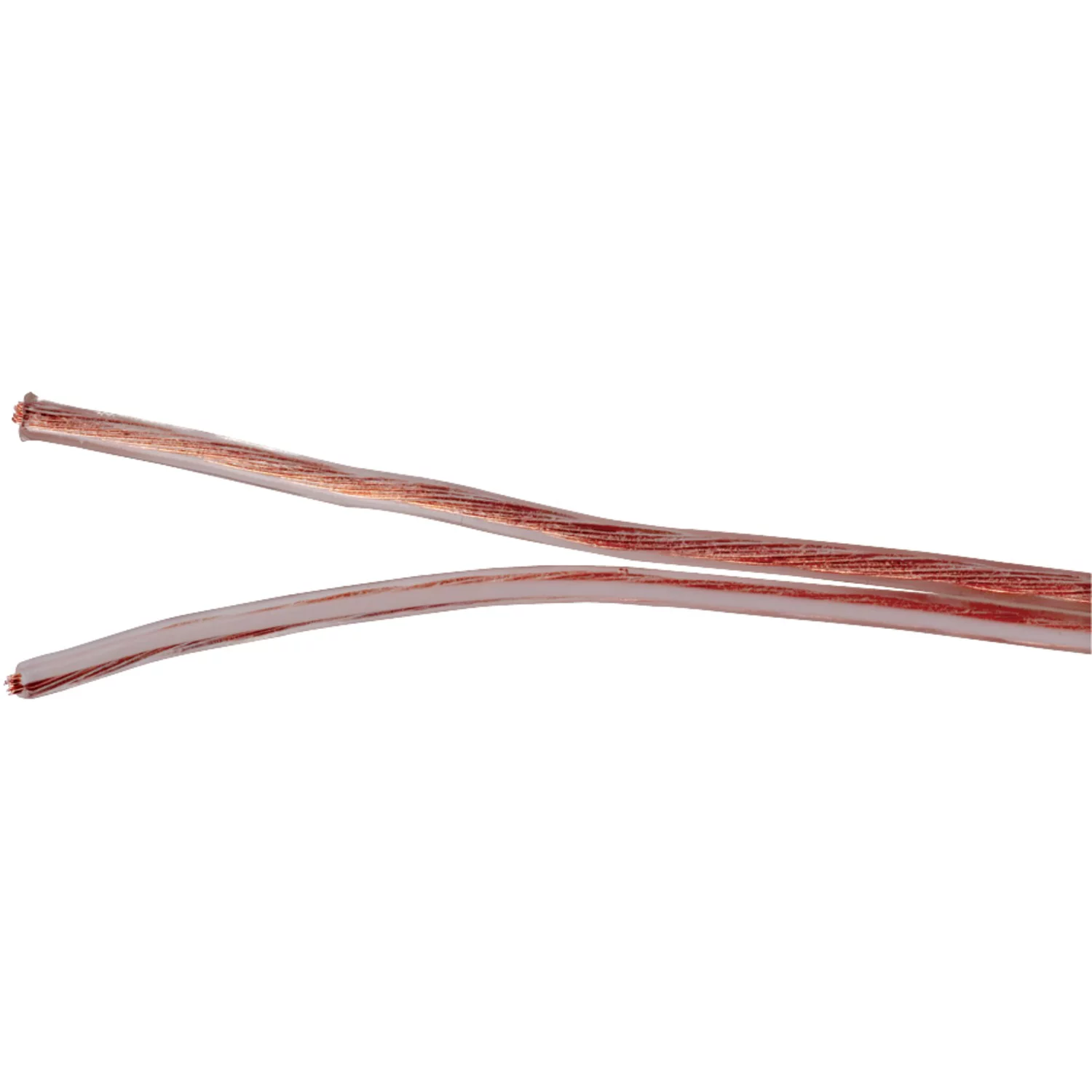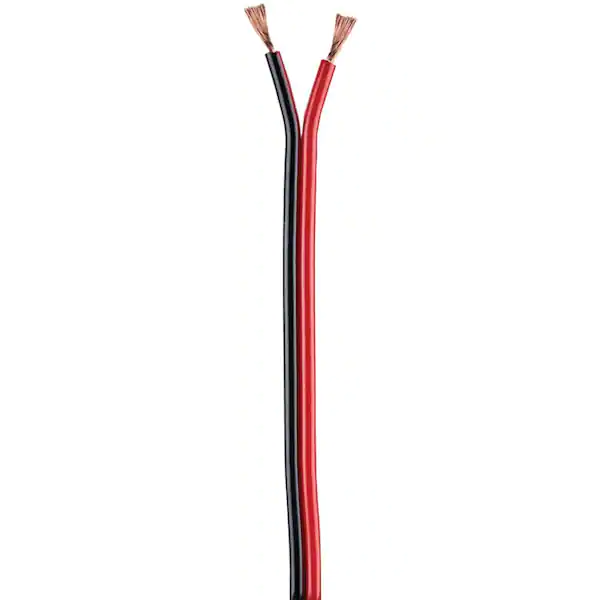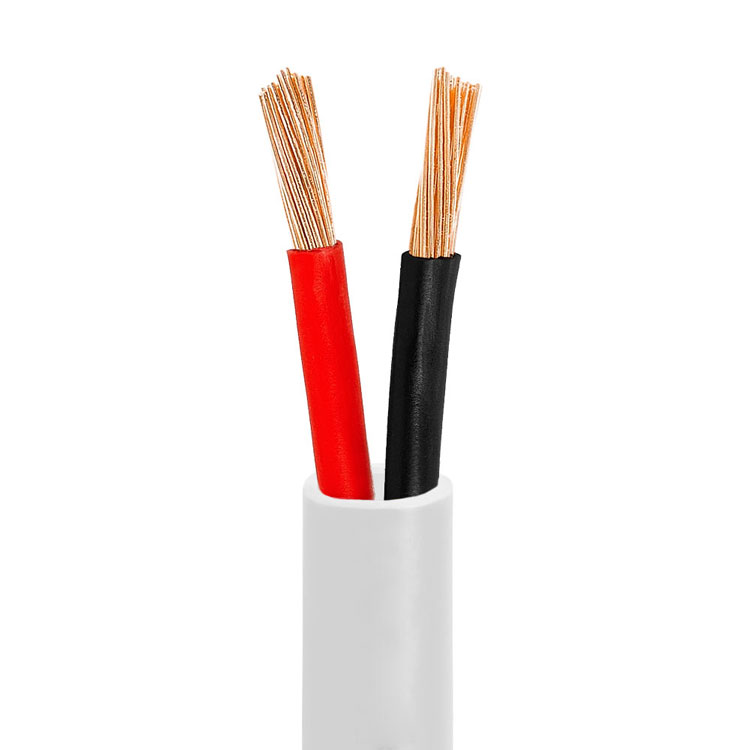What is speaker cable?
Speaker cable is the wire used for the electrical connections between speakers and amplifier sources. It has three key electrical properties: resistance, capacitance and inductance. Resistance is by far the most important property to look at. Low-resistance wire allows more of the source’s power through to the speaker coil, meaning more power and more sound.
speaker cable Spec:
| AWG | 4Ω Speaker Cable | 8Ω Speaker Cable | 70V Speaker Cable | ||||||
| Power (%) / Loss (dB/Ft.) | |||||||||
| 11% .5 |
21% 1.0 |
50% 3.0 |
11% .5 |
21% 1.0 |
50% 3.0 |
11% .5 |
21% 1.0 |
50% 3.0 |
|
| 12 | 140 | 305 | 1150 | 285 | 610 | 2285 | 6920 | 14890 | 56000 |
| 14 | 90 | 195 | 740 | 185 | 395 | 1480 | 4490 | 9650 | 36300 |
| 16 | 60 | 125 | 470 | 115 | 250 | 935 | 2840 | 6100 | 22950 |
| 18 | 40 | 90 | 340 | 85 | 190 | 685 | 2070 | 4450 | 16720 |
| 20 | 25 | 50 | 195 | 50 | 105 | 390 | 1170 | 2520 | 9500 |
| 22 | 15 | 35 | 135 | 35 | 70 | 275 | 820 | 1770 | 6650 |
| 24 | 10 | 25 | 85 | 20 | 45 | 170 | 520 | 1120 | 4210 |
How does resistance affect speaker cable performance?
Generally speaking, resistance starts to have an effect on the performance of a speaker cable when resistance is greater than 5% of the speaker’s impedance. Resistance is affected by two key aspects: wire length and the cross sectional area of the wire. The shorter the wire is, the less resistance it will have. The trick here is to minimise wire lengths where possible but still ensure your speakers are positioned apart . It’s also important that the wire lengths to both speakers are the same to ensure they both have equal impedance values.
The cross sectional area of the wire is referring to the thickness, or gauge, of the wire. The thicker a wire or the lower the gauge, the less resistance. It is therefore a combination between speaker impedance, length and gauge that affects the resistance.





